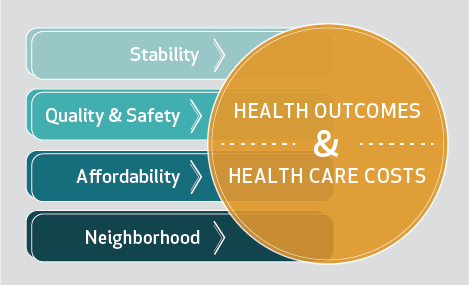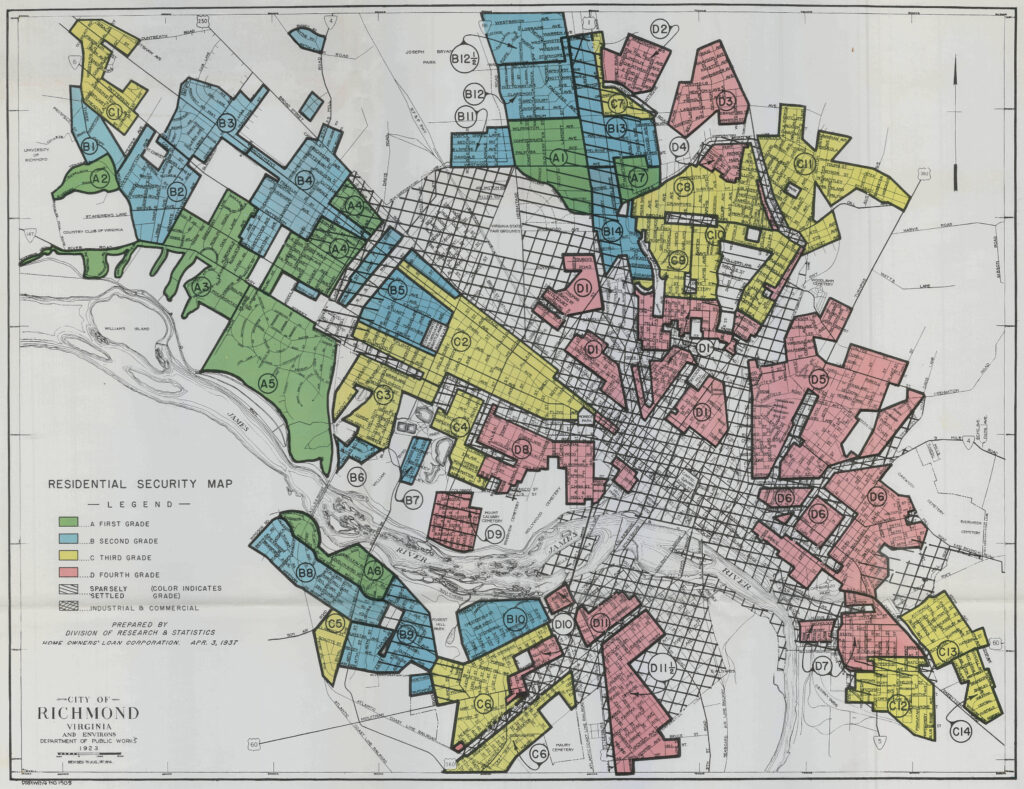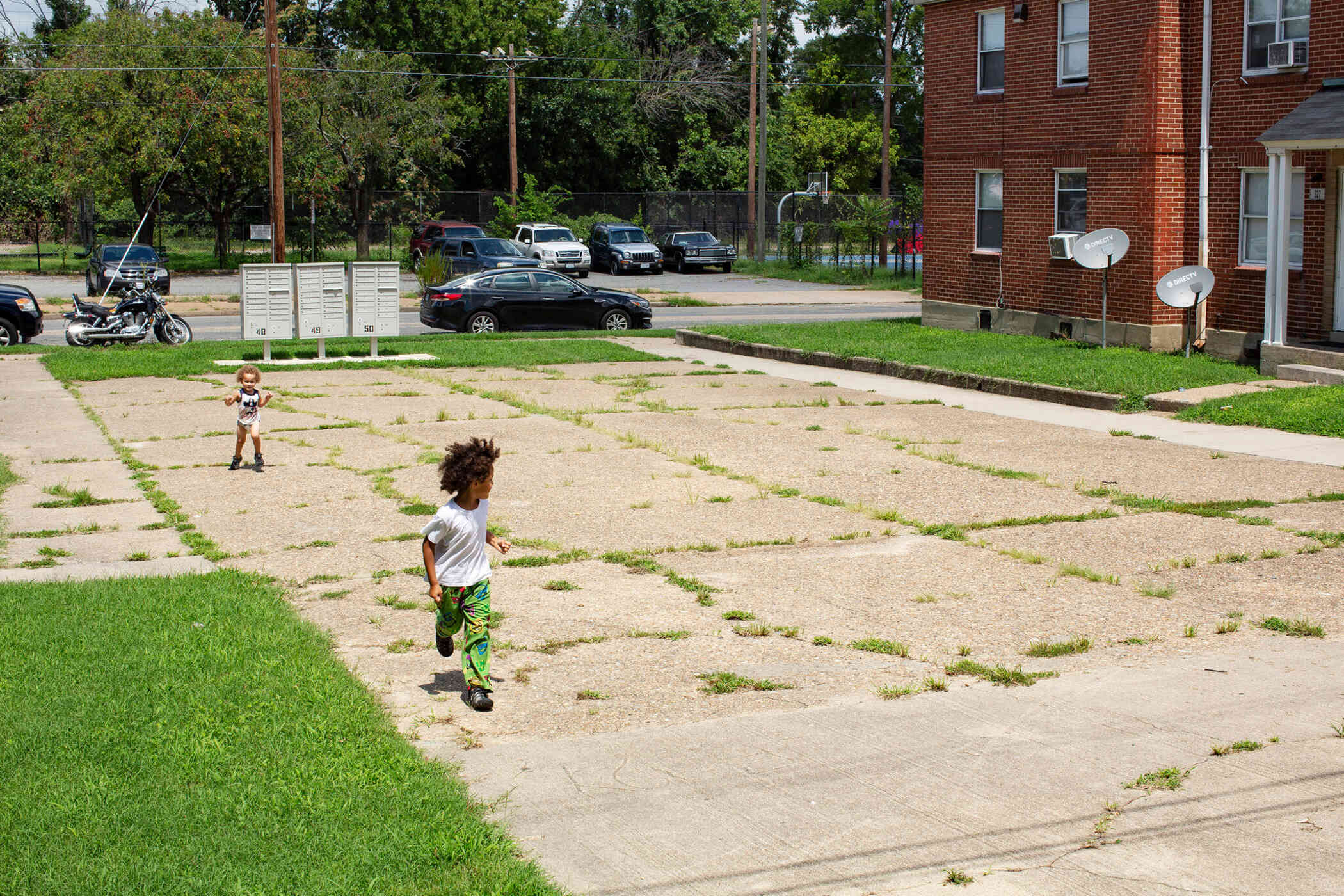Housing, History and Health
Housing has important ramifications on one’s health. More specifically, housing stability, quality, safety, and affordability all affect health outcomes, as do physical and social characteristics of neighborhoods.
It’s not by coincidence that minority communities frequently suffer the worst of these factors. Historical policies, such as redlining and restrictive covenants, have reinforced inequities. Richmond is no exception. Residents of affluent, majority-white neighborhoods, such as Westover Hills, have more than a 20 year increased lifespan over members of majority Black communities, such as Gilpin. Yet, they are separated by no more than 7 miles.
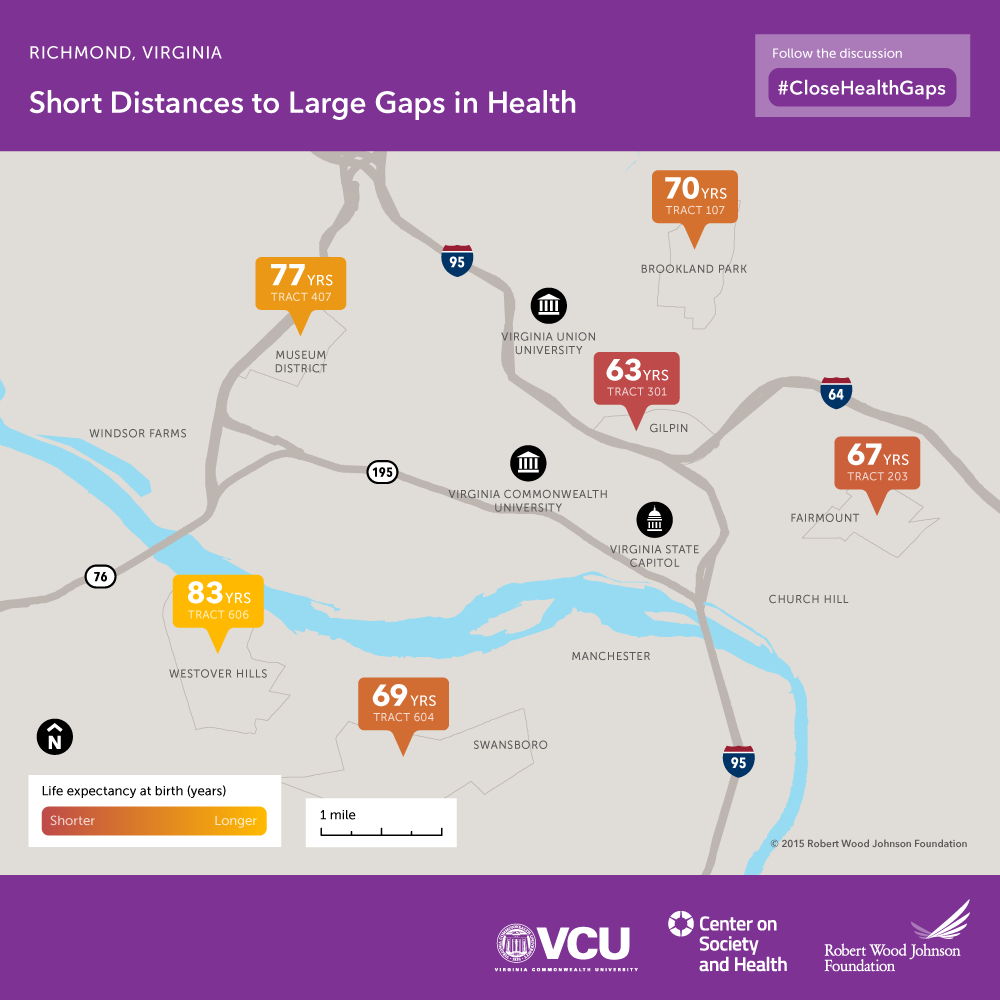
(Map of life expenctancy in the City of Richmond. Ages are higher in the western end of the city than the southside and eastern ends.)
Learning objectives
- Understand the concept of social determinants of health, and how housing status impacts health.
- Describe the impact of the history of housing segregation in Richmond on race-based health disparities.
- Increase awareness of the ways in which policy decisions have perpetuated structural racism and have continued to harm people of color living in the City of Richmond.
NOTE: Users who are pursuing the Unlocking Health Equity badge, credit through the VCU Health System DEI learning requirement, or those who would like to claim continuing education credit must complete and submit the Reflection Activity at the bottom of this page. Please visit VCU Health Continuing Education for more information.
Learning materials
The materials below can be reviewed in less than an hour, and users are encouraged to review the materials in the order they are presented.
Social Determinants of Health
According to Healthy People 2030, social determinants of health (SDOH) are the conditions in the environments where people are born, live, learn, work, play, worship, and age that affect a wide range of health, functioning, and quality-of-life outcomes and risks.
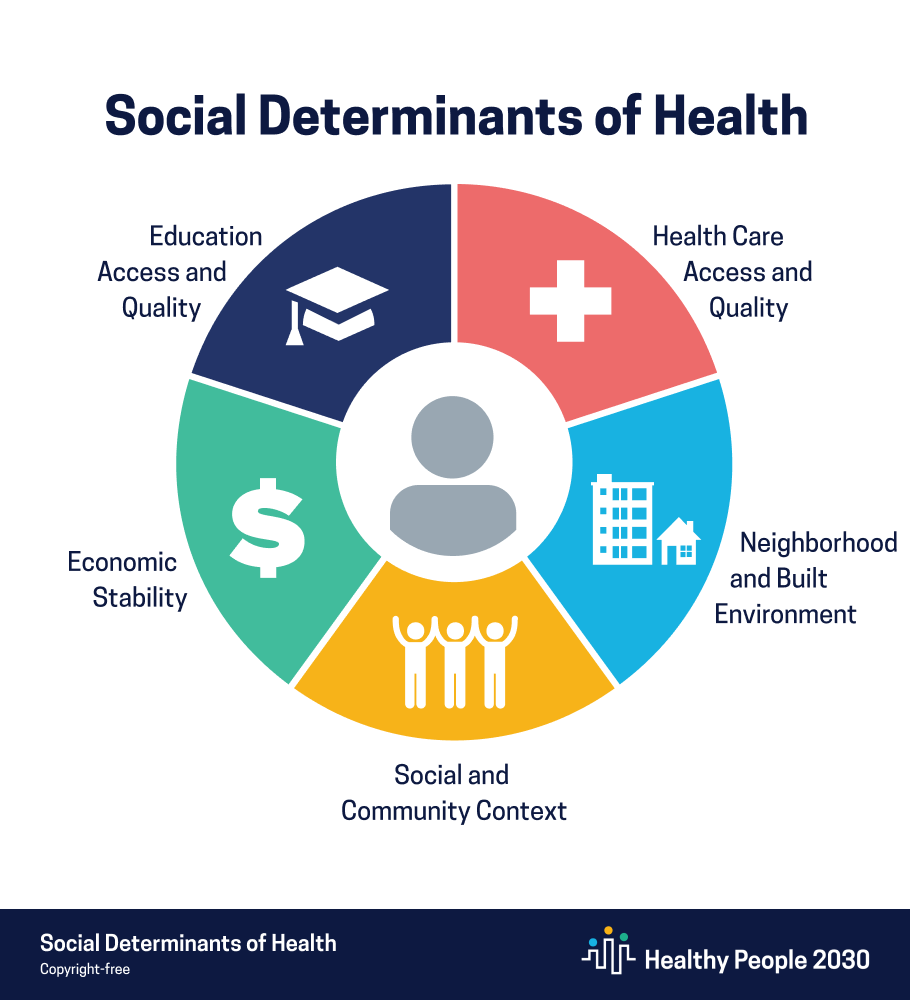
(A graphic of a wheel with various components showing domains contributing to social determinants of health)
SDOH can be grouped into 5 domains:
- Economic Stability
- Education Access and Quality
- Health Care Access and Quality
- Neighborhood and Built Environment
- Social and Community Context
Social determinants of health (SDOH) have a major impact on people’s health, well-being, and quality of life. Examples of SDOH include:
- Safe housing, transportation, and neighborhoods
- Racism, discrimination, and violence
- Education, job opportunities, and income
- Access to nutritious foods and physical activity opportunities
- Polluted air and water
- Language and literacy skills
SDOH also contribute to wide health disparities and inequities. For example, people who don't have access to grocery stores with healthy foods are less likely to have good nutrition. That raises their risk of health conditions like heart disease, diabetes, and obesity — and even lowers life expectancy relative to people who do have access to healthy foods.
Just promoting healthy choices won't eliminate these and other health disparities. Instead, public health organizations and their partners in sectors like education, transportation, and housing need to take action to improve the conditions in people's environments.
Required Resources
We ask that you spend the hour reading and viewing the resources above and viewing as many of the linked resources below as possible prior to completing the reflection activity. Reflections will be evaluated, and individuals may be asked to resubmit if answers are incomplete or do not meet the length requirement.
Mapping Inequality - Redlining in New Deal America: This interactive map (developed by researchers at the University of Richmond, Virginia Tech, the University of Maryland, and Johns Hopkins University) shows Home Owners’ Loan Corporation redlining maps from the 1930s and 1940s for cities across the country, including Richmond.
HEARD: Stories of Surviving & Thriving in America's Public Housing: HEARD is an hour-long documentary that captures the inspiring stories of five people who grew up in “the projects” in Richmond, Virginia, surviving and thriving in spite of, and often because of, the challenges they've had to overcome.
Public Housing History: This resource provides a timeline and describes the history of public housing in the United States from its inception in the 1940s as a New Deal Program to the present day.
History Lessons for Today’s Housing Policy The Political Processes of Making Low-Income Housing Policy: This detailed 2012 research paper describes U.S. housing policy across the decades from the 1930s to present day.
East Lake Meadows: A Public Housing Story: Ken Burns presents East Lake Meadows: a Public Housing Story, a film by Sarah Burns and David McMahon. Learn the history of East Lake Meadows, a former public housing community in Atlanta. Stories from residents reveal hardship and resilience, and raise critical questions about race, poverty, and who is deserving of public assistance.
Time to reflect on what you have learned
Reflection activity directions
Users who are pursuing VCU’s History and Health; Racial Equity badge, credit through VCU Health System DEI learning requirement or those who would like to claim continuing education credit must complete and submit the Reflection Activity. The form asks the user to submit basic biographical information (e.g., name, department) and to answer one of the following 3 prompts. Your response must be a minimum of 250 words.
PROMPT OPTION 1: Housing characteristics can serve as either advantages or disadvantages to an individual’s physical and mental health. Think about your own housing history. What characteristics in your own housing experiences served as either an advantage or a disadvantage to you? How did those experiences either promote your physical and/or mental health or present you with challenges to overcome?
-OR -
PROMPT OPTION 2: Redlining was a nationwide 20th Century practice. Look up the redlining map for the town you grew up in on the Mapping Inequality website. Describe what you learned about your town from this map. Explain how the map matches or does not match your own experiences living there.
-OR-
PROMPT OPTION 3: Heat islands in Richmond pose a significant health threat for many low income city residents. How might health professionals in Richmond work to address this problem? Describe a strategy or policy that VCU Health and/or VCU Health Sciences could implement that would address the problem of heat islands in Richmond.
